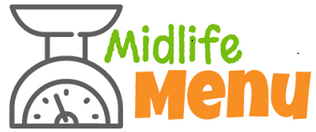Protein – Helping to Fight Midlife’s Hotspots
Protein – Helping to Fight Midlife’s Hotspots
With the rise in interest in vegan diets or more plant based diets, I get asked quite a lot about protein. How much should I be having? Am I getting enough?
There’s a misconception that going vegan means missing out on protein because you are not having meat, fish or eggs, all of which are high in the 9 essential amino acids - the building blocks of protein.
However, that idea has been disputed and it’s actually more important how much protein you have over a 24 hour period. The body can use the amino acids that it has stored and are coming in to create the amino acids that we need.
The good news is that it’s very rare to find someone who has a protein deficiency. It’s more a case of thinking about the best way of getting protein into your daily eating, whether you are vegan or not.
Protein's Building Blocks
Protein is an important part of your diet and it’s critical for midlife health. You need it for good skin, hair and nails but also to repair damage, digest food, fight infections, build muscle and bone, create hormones, and even to think and have good moods.
Higher protein diets can help fight high blood pressure, diabetes, and osteoporosis - all those midlife hotspots I have talked about many times. It’s also great for boosting your metabolism, and weight management. Protein is better than both fat and carbs at keeping you full.
And that’s great for keeping midlife belly fat under control. Read more about how protein helps in my blog post on belly fat.
How much protein is enough?
There isn’t a real rule that applies equally to everyone. But there are a few factors to consider when figuring out how much protein you need.
Start with the minimum recommendation of 0.8 g/kg (0.36 g/lb) per day.
So, for a 68 kg (150 lb) healthy non-athlete adult, this is about 55 g protein/day.
Mind you, this is a minimum to prevent protein deficiency. It's not optimal for good repair, digestion, immune function, muscle/bone building, hormones, thinking and great moods. Athletes need more protein for their energy and muscle mass. The older we get the more we need protein to help ward off muscle and bone loss that's common in old age. And injured people need more for recovery and healing.
If you fall into one of those categories aim for 1.3 g/kg (0.6 g/lb) per day.
How much protein is too much?
As with fat and carbohydrates, eating too much protein can cause weight gain. Extra protein can be converted into sugar or fat in the body. The interesting thing about protein is that it isn’t as easily or quickly converted as carbohydrates or fat; this is because of its "thermic effect." The thermic effect is the amount of energy required to digest, absorb, transport and store a nutrient. To digest protein, your body needs to spend energy (i.e., burn calories). More calories than when metabolising fats or carbohydrates.
If you’re concerned that high protein intake harms healthy kidneys, don’t be. If your kidneys are healthy, they are more than capable of filtering out excess amino acids from the blood. The problem only occurs in people who already have kidney issues.
How much protein is in food?
A 3.5 oz chicken breast has 31 g
A 3.5 oz can of salmon has 20 g
½ cup cooked beans contain 6-9 g
A large egg contains 6 g
¼ cup nuts contains 4-7 g
1 medium baked potato contains 3 g
How to Get Your Protein: Spread It Out
The body can’t absorb more than 20-25 grams of protein at a time so it’s better to have protein spread out throughout the day, rather than it being all lumped into one at dinner time, when there is a tendency towards eating meat and having a higher protein intake.
For example, go for eggs at breakfast, have nuts and seeds as snacks, and maybe try lunch that has a protein source, like a tuna salad, a chicken sandwich or tofu. At dinner you could include a protein source like tofu stir fry or meat, eggs, fish, cheese - any of those.
For someone who is vegetarian or vegan, chickpeas, beans and pulses will help provide protein sources as well.
A great option that’s really popular at the moment is quinoa because it contains all the essential amino acids. And if you’re unsure how to use quinoa check out the Midlife Menu quinoa recipe.
Brown rice is also one on the good protein list. And some veggies contain protein as well - spinach, kale, broccoli, celery, carrots. All mixed in together, you will quite easily meet your protein requirements.
Don’t forget proteins from peanut butter, cashew nut butter, almond nut butter. And if you want any more delicious recipes to give you some inspiration why not sign up below and get one delivered to your inbox every week?
Content Disclaimer
The information contained above is provided for information purposes only. The contents of this blog are not intended to amount to advice and you should not rely on any of the contents of this blog. Professional advice should be obtained before taking or refraining from taking any action as a result of the contents of this blog. Midlife Menu Ltd disclaims all liability and responsibility arising from any reliance placed on any of the contents of this blog.





Overeating during lockdown can be triggered by a rollercoaster of emotions or stress from homeschooling, looking after oldens or just trying to cope with working from home. Cravings, snacking and home baking can make overeating during lockdown very easy. So here's what to do to tackle the lockdown overeating. www.midlifemenu.com/blog/overeating-lockdown